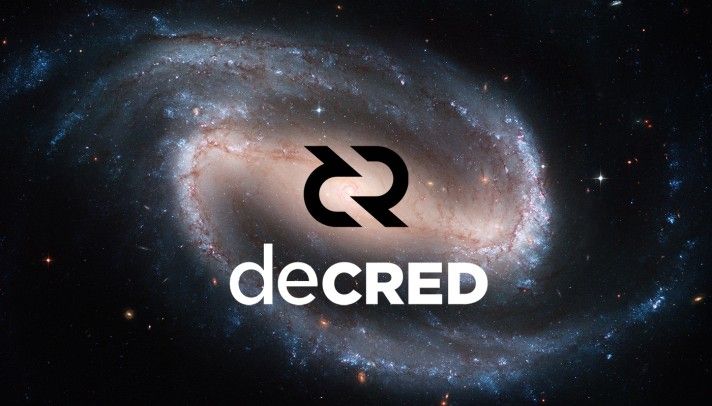Decred: Where did it all Begin
Amongst our community the true origins of the Decred project is to some extent, a mystery. There are many black holes in the beginning of the Decred story. Its foundations are shrouded in secrecy.

By The Decred Digest - Jun 10, 2017

“The beginning is the most important part of the work” — Plato.
Amongst our community the true origins of the Decred project is to some extent, a mystery. There are many black holes in the beginning of the Decred story. Its foundations are shrouded in secrecy. One thing is clear — the Decred founders and developers value privacy and anonymity. It seems they have no interest in being in the spotlight. Instead, they believe in the power of open-source projects, and in the strength that a community can bring; the recognition that success doesn’t come from one person, but from many. That’s why everyone is welcome and encouraged to contribute in the Decred project.
As a community we set out to put the pieces together — where did it all begin? Our obvious starting point was to identify who founded Decred, and when. It turned out this was not so simple! Many within the Decred community assumed that the current project organizer, Jake Yocom-Piatt, founded Decred right from the start. However, after doing a little digging, it appears this isn’t the case. In this story, we’ll uncover how the cypherpunk roots of the Decred Project run deep.
The very origin of the project can be traced back to April 2013, when an unknown person going by the name of tacotime responded to a thread on Bitcointalk titled ‘Want to make an alt coin that actually changes something?’ On April 3rd 2013 tacotime replied, stating that they have had something in mind for a while, but they needed people with the time to code. Shortly after, tacotime started a new thread and published the whitepaper ‘Memcoin2 (MC2): A Hybrid Proof-of-Work, Proof-of-Stake Crypto-currency’. MC2 extended and combined the principles of both Litecoin and Peercoin, and was developed using btcd (the platform created by Decreds current developers).
Tacotime spent most of 2013 trying to co-ordinate the project and funding alongside its organizer, another unknown individual, _ingsoc. As far as we know, no one knows the true identity of _ingsoc, but what we do know is that their involvement and influence in MC2 and Decred was, and still is, fundamental to the success of the project.
Soon after Memcoin2 was renamed to Netcoin, before shortly reverting back to Memcoin2 again after another ‘Netcoin’ was introduced causing some confusion. Towards the end of 2013 tacotime then began the search for a lead developer to get the MC2 project off the ground.
However, surprisingly, at the start of 2014 it appears that tacotime also began work on another popular cryptocurrency — Monero. Along with a number of other contributors tacotime forked Bytecoin, into Bitmonero, and then Monero. Most of the Memcoin2 community thought tacotime had stopped working on MC2 for good, but unbeknown to them he had still been secretly coding away, continuing with the project behind closed doors.
In early 2014 _ingsoc approached Company Zero (C0) and CEO Jake Yocom-Piatt with tacotime’s MC2 concept, merging efforts to develop the Decred system. They were drawn to the development team’s talent and efforts in Bitcoin development. But they also shared a lot of their philosophies of collaborative governance and pushing for alternative systems — not at the expense of Bitcoin, but as an extension of technology.
At that time C0 was named Conformal Systems, an open-source software engineering firm that focused on a range of privacy and security orientated solutions. These included Cyphertite (zero-knowledge cloud storage) and Coinvoice (a Bitcoin payment processor). But the team were primarily focused on the development of btcd, an alternative full node Bitcoin implementation written in Go (golang), which was eventually migrated to btcsuite in 2015. The btcsuite infrastructure is highly regarded in the cryptocurrency community and used by many of the space’s leading developers including; Ethereum, BitGo, Factom, OpenBazaar and the Lightning Network team.
On November 30th, 2015 C0 published an opinion piece outlining Bitcoin’s biggest challenges: governance, funding and proof-of-work miners having too much power. In it Jake suggested that Bitcoin’s greatest challenge relates to its governance. He highlighted the long-running scaling clash between development teams and miners. A clash that has only gotten worse, and is still continuing today almost two years later. Jake recognized the power that miners have. Whether this is creating a denial-of-service by mining empty blocks, censoring transactions by explicitly not including them in blocks, or hindering new consensus rules from being implemented.
The miners might have one idea, while development teams and exchanges have another. But because Bitcoin has no decentralized governance system, there is no way everyone can agree on a formal way to progress the blockchain. Perhaps the most important thing Jake highlighted was that the actual holders and users of Bitcoin have no say in any decisions about the future of Bitcoin.
In their post Jake and C0 also suggested that the way Bitcoin is funded could also create problems. They recognised that the funding of Bitcoin Core developers by outside entities, such as Blockstream could create real and perceived conflicts of interest, bringing into question the extent that outside entities can exert influence over Bitcoin. For example, “the trouble now is that these same developers have a financial interest in keeping the 1 MB block size to drive usage of side-chains, so even if their genuine personal opinion of the 1 MB cap changed, they are very unlikely to share that opinion publicly. This means that external observers cannot differentiate between genuine actions and self-interested actions by those developers.” Jake concluded that “the only reasonable way to make real progress on these challenges is to create an altcoin that implements the proposed solutions.
Shortly afterwards on December 7th 2015 C0 published another post ‘Iterating Bitcoin,’ which proposed a solution to the above problems. Jake stated that “in order to create a sustainable system of governance, we have created a project constitution and extended the notion of consensus hybridization to apply more generally as one of several layers in a stratified consensus system. This stratification allows various groups of stakeholders to have representation at various consensus layers. Beyond a layered hybridized consensus system, we have added a consensus rule that allocates 10% of each block reward to a development fund that will be used to pay for ongoing development and related activities. By allocating 10% of each block subsidy to the development fund, continuous development and improvement of the software is possible without the conflicts of interest present in current Bitcoin Core (BC) development process”.
On December 12th 2015 the solution to the problem was born — Decred. C0 announced that Decred will be an “open, progressive, and self-funding cryptocurrency with a system of community-based governance integrated into its blockchain” with a “hybridized proof-of-work proof-of-stake (PoW/PoS) consensus system that aims to strike a balance between PoW miners and PoS voters to create a more robust notion of consensus.” A project that brought forward the theoretical proposals of MC2. It is believed that the name Decred was thought of by tacotime, while brainstorming with _ingsoc and Jake on the topic of “decentralized credits”.
Three days later tacotime submitted his last ever post, on the MC2 thread. Tacotime posted “The descendant of this system is here: https://bitcointalk.org/index.php?topic=1290358.0 — Closing this thread.” Tacotime continued to contribute to Monero until late 2016, and is still listed on the Monero core team. But he has since disappeared. Some suspect that tacotime may be contributing to Decred under a different alias; however, the truth is — no one really knows.
Finally, on the 8th February 2016 the Decred mainnet launched, and with it the Decred constitution. A set of binding rules and guiding principles that were established to create an equitable and sustainable framework within which to achieve Decred’s goals.
When the constitution was written the mission of the project was “to develop technology for the public benefit, with a primary focus on cryptocurrency technology”. This is something I believe still holds true. However, since then Decred has evolved into something that now means many different things to many different people. Everyone has their own reasons for becoming involved in the project. But it is clear that whatever these differences are, we come together to form a open, free and inclusive community that values governance, privacy and security — the guiding principles of the Decred constitution.
The foundations of Decred are solid. For a blockchain with a decentralized governance system this matters. Over time Decred has listened, learned, and adapted. It has a unique history, with links to Bitcoin and Monero. It is a cryptocurrency with cypherpunk roots, and an open and friendly community.
The origin story of Decred may have shaped us, but it’s now vital that we come together to focus on our future, where we aim to reach the global population. We are a cryptocurrency of the people, by the people and for the people. Everyone who reads this can make a positive contribution to the project, you can make a positive change. If you can add value to the project you will not only add value to your own holdings, you will be helping to create something that is capable of changing the world, for the better.
Decred has become a cryptocurrency that is progressive in nature. Its unique governance system allows it to rapidly evolve according the wishes of the stakeholders. The 2017 roadmap is now over 50% complete and Lightning Network integration is just around the corner. With the first ever on-chain vote in history almost finished one thing is clear — what becomes of the Decred project now, is up to us.





Comments ()